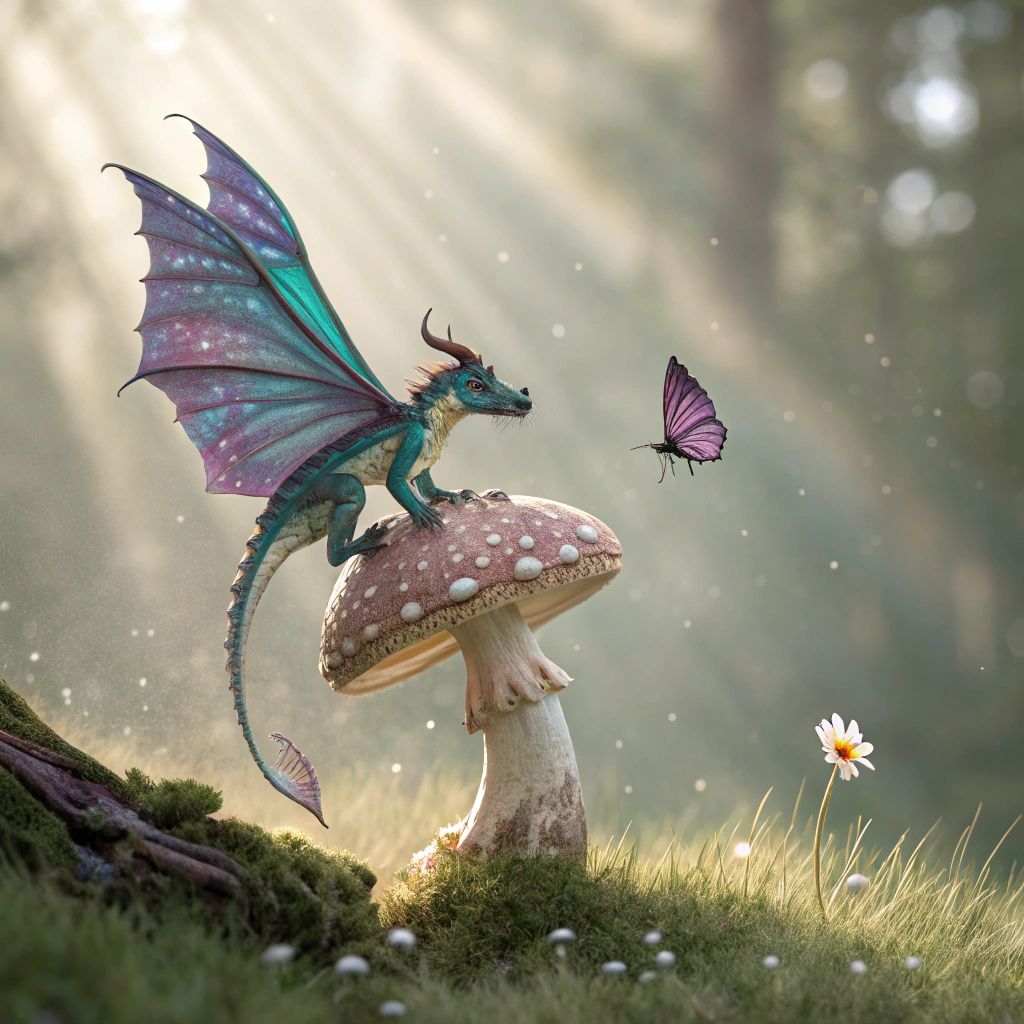
Faerie Dragon Name Generator
Name: Aurelix
Meaning Origin Description Golden Light Latin A shimmering golden-scaled dragon with butterfly wingsName: Pixeflare
Meaning Origin Description Pixel Fire Modern Fantasy A tiny dragon with digital-like sparkles in its scalesName: Sylphoon
Meaning Origin Description Wind Spirit Greek/Modern A graceful dragon that rides air currents like a leafName: Luminia
Meaning Origin Description Light Bearer Latin A dragon that glows with inner radianceName: Tinkerflit
Meaning Origin Description Tinker Flight English A playful dragon that loves to fiddle with shiny objectsFaerie Dragon Details
| Habitat | Enchanted forests and fey realms |
| Breath weapon | Euphoric gas |
| Usual alignment | Chaotic Good |
The Faerie Dragon (Draconis pixiensis) is a diminutive species of dragon, rarely exceeding 2 feet in length. Their most distinctive feature is their butterfly-like wings, which display iridescent patterns and can shift through various colors of the rainbow. Their scales are similarly prismatic, typically presenting in vibrant hues of green, blue, or violet that may change based on mood or age.
These creatures inhabit dense forests, particularly areas with high concentrations of magical energy or fey influence. They construct their lairs in hollow trees, forgotten fairy rings, or among large clusters of mushrooms. Their diet consists primarily of fresh fruit, flower nectar, and small insects, though they have been known to consume magical energies directly.
Faerie Dragons possess significant intelligence and an innate capacity for arcane magic, particularly illusions. They demonstrate remarkable problem-solving abilities and complex social behaviors. Their respiratory system is unique among draconic species, as they produce no traditional breath weapon but instead generate clouds of euphoria-inducing gas.
Behaviorally, these creatures are notably playful and mischievous, often engaging in elaborate pranks and displaying a keen sense of humor. They form loose social groups and maintain complex relationships with other fey creatures. Despite their small size, they exhibit remarkable courage when defending their territories or allies.
Their natural alignment tends toward chaotic good, as they generally seek to promote joy and wonder while maintaining their freedom to act on whims. They show particular disdain for creatures that harm nature or suppress creativity and fun.
Reproduction occurs rarely, with females laying 1-2 eggs every few years. The eggs require exposure to moonlight and magical energies to properly develop. Young Faerie Dragons reach maturity within two years and can live for several centuries under optimal conditions.
The species demonstrates remarkable resistance to magical effects and possesses natural telepathic abilities, allowing them to communicate with other intelligent creatures within a limited range. Their wing structure enables both precise hovering and rapid, acrobatic flight patterns, making them exceptionally agile aerial predators despite their diminutive size.
Environmental factors that affect their population include deforestation, the decline of magical energies in certain regions, and the encroachment of civilization into their preferred habitats. They adapt well to preserved woodland areas where they can maintain their traditional lifestyle of playful mischief and natural stewardship.